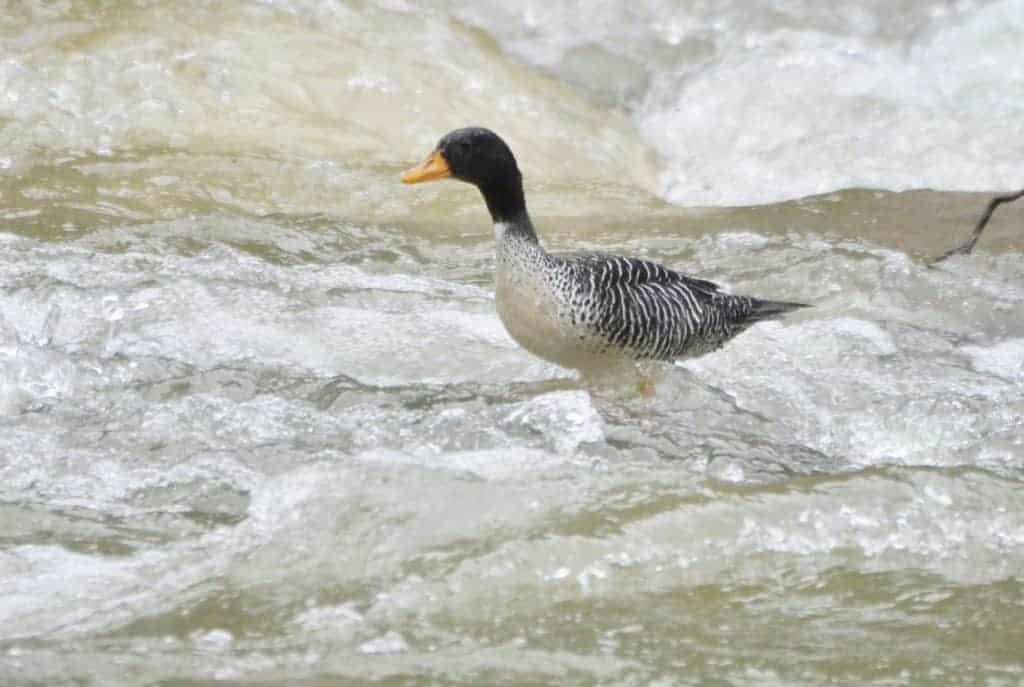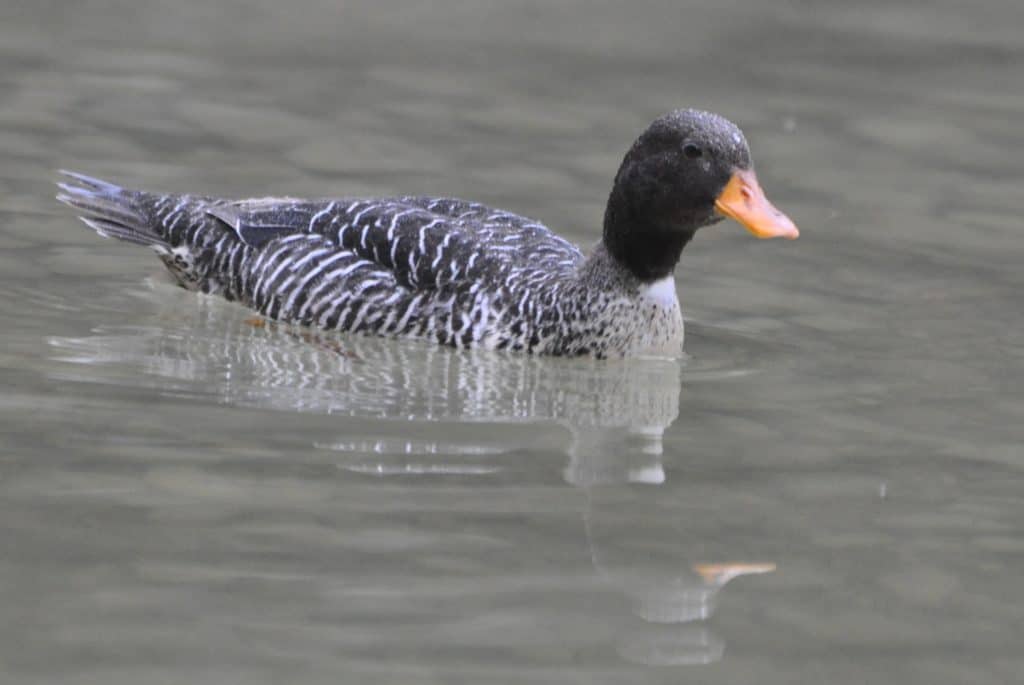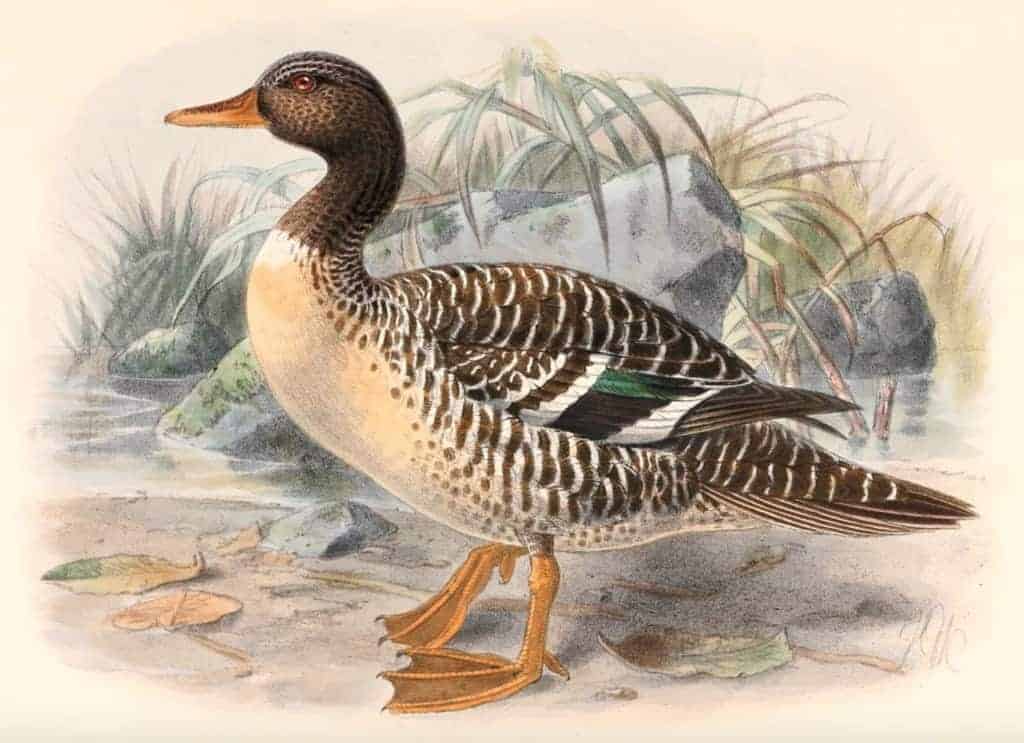Salvadori’s Teal


Salvadorina waigiuensis
First described by Walter Rothschild (2nd Baron Rothschild) and German ornithologist Ernst Johann Otto Hartert in 1894, this member of the true ducks has a very resticted range; sub-tropical New Guinea. Salvadori’s Teal are somewhat smaller than a Mallard Anas platyrhynchos, this duck loves mountain torrents, brooks and streams. Aquatic insects and larvae appear to be favoured, with possibly tadpoles and small fish.

The duck is shy and nervous, with rapid jerky head movements. Local people on the island say it is not so good to eat. It appears to have a small population size because of its specialised habitat requirements. It is likley to be slowly declining through hunting and habitat degradation, so therefore qualifies as Vulnerable. The population has been variously estimated at 2500–20,000 birds. Pollution from mining has affected watercourses, though improvements have happened in recent years. The lack of infrastructure in some areas of New Guinea probably works to the bird’s advantage.

With a long breeding season, it is assumed that Salvadori’s Teal co-ordinates egg laying to the dry season, when suitable nesting habitat is exposed along the river banks. This duck is currently not represented in aviculture. In the early 1960’s a number were housed at Slimbridge, having been gifted to the then Wildfowl Trust by Sir Edward Hallstrom. However they were never propagated.
We imagine that with our current access to scientifically formulated feeds, this outcome would be different today.
Share this page